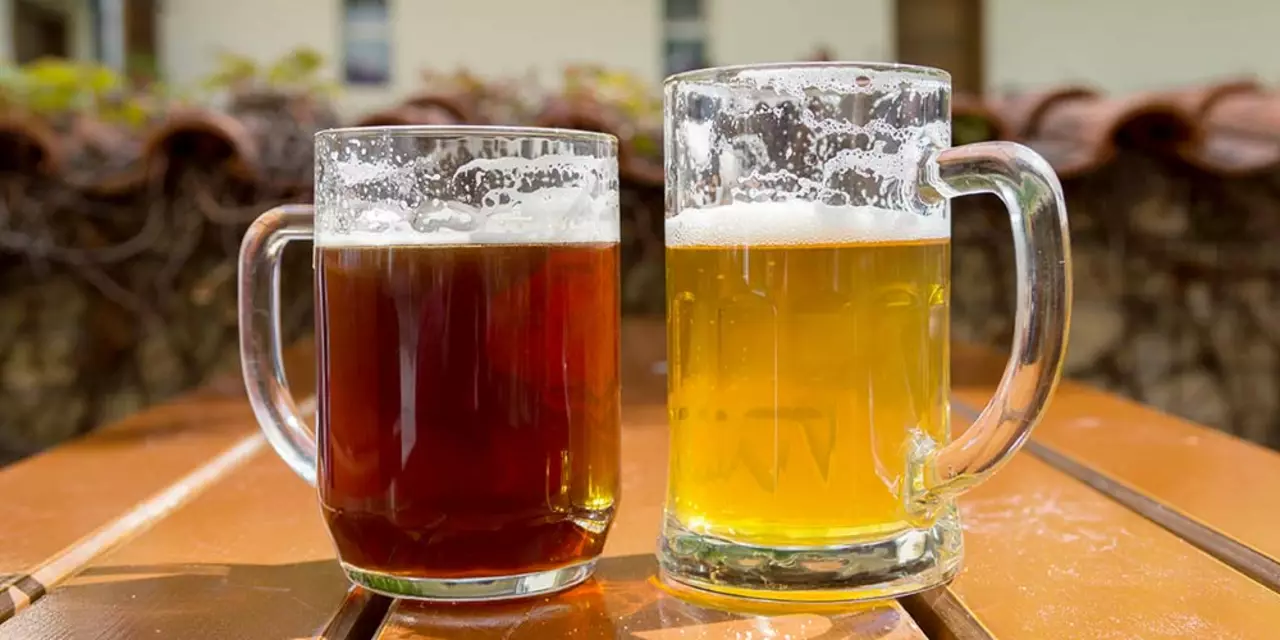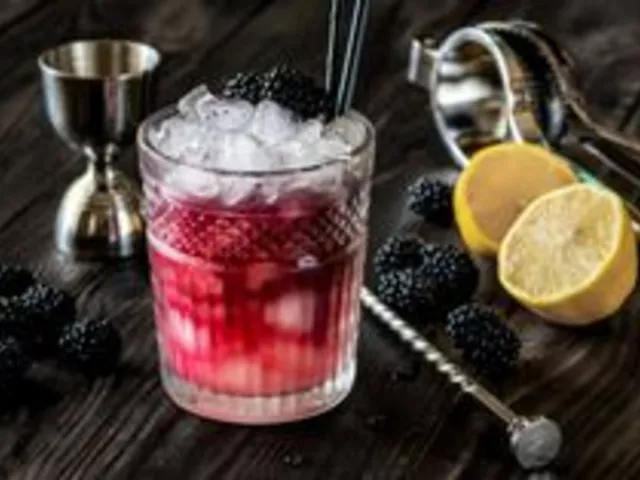Exploring the Difference between Ale and Lager: Why Ale Tastes Better
Ale and lager are two of the most popular types of beer, but there are significant differences between the two. Ales are made from top-fermenting yeast, while lagers are made from bottom-fermenting yeast. This difference in fermentation process changes the flavor and complexity of the beer. Ales are usually fuller-bodied, with a more complex flavor profile and higher bitterness, while lagers tend to be light and crisp, with a more subtle flavor.
The ingredients used in the brewing process also contribute to the flavor of each beer. Ales tend to be brewed with a variety of malts, while lagers are brewed with just one variety of malt. This difference in malt contributes to the flavor of each beer, and this is why ales tend to be more flavorful than lagers. Ales also tend to be brewed with a variety of hops, which adds to the complexity and bitterness of the beer.
The brewing process for ales and lagers is also different. Ales are usually brewed at higher temperatures, which can contribute to the fuller body and more complex flavor of the beer. Lagers are usually brewed at cooler temperatures, which helps to create a more crisp, light flavor.
Another factor that contributes to the flavor of ales and lagers is the aging process. Ales are usually aged at room temperature, while lagers are typically stored at cold temperatures, which further contributes to the light and crisp flavor of lagers. This aging process also contributes to the complexity of the beer, as the flavors have time to develop and deepen.
The last factor that contributes to the flavor of ales and lagers is the type of yeast used in the fermentation process. Ales are typically brewed with top-fermenting yeast, which can impart a wide range of flavors, such as fruity, spicy, nutty, and floral. Lagers are usually brewed with bottom-fermenting yeast, which can impart a more subtle flavor profile. This difference in yeast also contributes to the complexity of the beer, as the flavors have time to develop and deepen.
Overall, ales tend to be fuller-bodied, with a more complex flavor profile and higher bitterness, while lagers tend to be light and crisp, with a more subtle flavor. This difference in flavor is due to the differences in ingredients, brewing process, aging process, and type of yeast used in the fermentation process. This is why ales tend to taste better than lagers.
The Science Behind Why Ale Tastes Better than Lager
Ale is an incredibly popular type of beer that comes in a variety of styles and flavors. Many people prefer the taste of ale over lager, but why? What is the science behind why ale tastes better than lager?
One of the main differences between ale and lager is the type of yeast used in the fermentation process. Ale is fermented with top-fermenting yeast, which produces a beer with a fruity or spicy flavor and higher alcohol content. Lager, on the other hand, is fermented with bottom-fermenting yeast, which produces a beer with a clean, crisp flavor and lower alcohol content.
Another key difference between ale and lager is the temperature at which they are fermented. Ale is typically fermented at a higher temperature than lager, which results in a beer that is more flavorful, aromatic, and complex. The higher fermentation temperature of ale also results in the production of esters, which are compounds that give ale its fruity, spicy, and floral aromas. Lager, on the other hand, is fermented at a much lower temperature than ale, resulting in a beer that is less flavorful, aromatic, and complex.
The final difference between ale and lager is the amount of time it takes for them to ferment. Ale typically ferments faster than lager, resulting in a beer that is ready to drink sooner. This also means that ale can be brewed more quickly and easily than lager, making it a popular choice for brewers and drinkers alike.
When it comes down to it, the science behind why ale tastes better than lager is largely due to the differences in fermentation processes, temperatures, and time. Ale is fermented with top-fermenting yeast at higher temperatures, resulting in a beer that is more flavorful, aromatic, and complex. Lager is fermented with bottom-fermenting yeast at much lower temperatures, resulting in a beer that is less flavorful, aromatic, and complex. Ale also ferments faster than lager, making it a popular choice for brewers and drinkers alike.
Brewers share tips for crafting the perfect Ale
Ale is a type of beer that has been brewed for centuries. It has a distinct flavor that sets it apart from other types of beer, such as lager. Many brewers have been perfecting their recipes for years to create the perfect ale. Here are a few tips from the experts on how to craft the perfect ale.
Choose the right malt
Malt is the base of any beer, and it has a huge impact on the flavor. For ales, it’s best to use a light-colored malt, such as pale ale malt. This will give the beer a nice, crisp flavor that is perfect for ales. Darker malts like pilsner malt can be used to give the ale a more robust flavor.
Pick the right hops
Hops are responsible for the bitterness and aroma of a beer. For ales, it’s best to use a combination of hops, ranging from mild to more intense flavors. Cascade and Centennial hops are great for adding a citrusy, floral aroma, while Chinook and Willamette are great for adding bitterness. Experiment with different hop combinations to find the perfect balance for your ale.
Choose the right yeast
Yeast plays an important role in the brewing process, as it ferments the sugars in the wort to create alcohol. Ale yeast is a top-fermenting yeast, which means it ferments at a higher temperature than lager yeast. Ale yeast usually produces a fruity, complex flavor that is perfect for ales. Different strains of yeast can be used to create different flavor profiles, so it’s important to choose the right strain for your beer.
Pay attention to fermentation temperature
Fermentation temperature is important for any beer, but it’s especially important for ales. Ale yeast ferments best at a temperature of 55-75°F. Higher temperatures can result in a beer with a higher alcohol content and a less desirable flavor. Lower temperatures can cause the beer to take longer to ferment and can result in a beer that is too sweet.
Use proper aging
Aging is an important part of the brewing process and can have a huge impact on the flavor of the beer. Ales are best when aged for a few weeks, as this allows the flavors to come together and the beer to mellow and mature. Aging for too long can cause the beer to become too bitter or too sweet, so it’s important to pay attention to the aging process to get the best results.
Understanding the Flavor Profiles of Ale and Lager: Why Ale Wins Every Time
When it comes to beer, there are two major types of brews: ales and lagers. While these two types of beer may appear similar, they actually have vastly different flavor profiles—which is why ale often wins out over lager. Here’s why.
Ales Have a Complex Flavor Profile
Ales are brewed using top-fermenting yeast, which ferment at warmer temperatures. This type of yeast produces a more complex flavor profile, including notes of dark fruits, spices, and even chocolate. This complexity makes ales stand out in comparison to lagers.
Lagers Offer a Milder Flavor
Lagers, on the other hand, are brewed using bottom-fermenting yeast, which ferment at cooler temperatures. This type of yeast produces a milder flavor with little to no complexity. You’ll likely notice notes of grain and cereal, but not much else. While some might find this mild flavor appealing, most beer-lovers are looking for something with a bit more depth.
Ales Offer More Variety
Ales come in many different varieties, from IPAs to stouts. This wide range of choices means that beer-lovers can select a brew that suits their individual taste. Lagers, on the other hand, are limited in their variety, with most falling into the traditional “pilsner” style.
Ales Are More Refreshing
The flavor profiles of ales and lagers make all the difference when it comes to refreshment. Ales are slightly bitter, which helps cut through the grease and cleanse the palate. Lagers, on the other hand, can be slightly sweet, which can leave a lingering aftertaste.
Ale Has a Higher Alcohol Content
Finally, ale has a higher alcohol content than lager. This means that you can enjoy a few pints of ale and still feel the effects. This can be a great way to enjoy a night out with friends.
At the end of the day, ale is the clear winner when it comes to flavor and refreshment. Its complexity and variety make it the perfect choice for beer-lovers of all types. So, next time you’re out for a pint, why not give ale a try? You’re sure to be glad you did.





